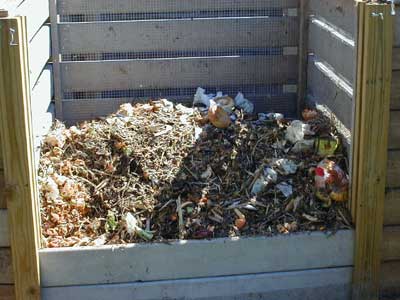



Look Inside the Mansfield Middle School Compost Pile.





Time - A balance of carbon and nitrogen, moisture, small particle size, oxygen and material mass no less than a. cubic yard affect how long the composting process takes. Speed is directly related to how much heat is generated. A compost pile that is made with the proper materials can heat up to 170 degrees Fahrenheit and produce usable compost in as short as 1 month. With less attention to the materials used and the environment provided for the microorganisms, composting will be cooler and slower, but will still produce a good finished product.

Temperature - Having a balance of carbon and nitrogen, moisture, small particle size, oxygen and material mass no less than a cubic yard, will ensure a hot pile. A hot pile indicates rapid decomposition. Compost piles heat up for the same reason that you heat up when you do lots of exercise. The microbes in the compost pile are working hard and using lots of fuel (pizza crusts, salad, banana peels). As a result, they give off heat. A pile 130 degrees Fahrenheit or more is considered "hot". At 130 degrees Fahrenheit, most weed seeds, human and plant pathogens are destroyed.
Microbes - There is a complex food web at work in a compost pile, representing a pyramid with primary, secondary, and tertiary level consumers. The base of the pyramid, or energy source, is made up of organic matter including plant and animal residues.
Turning the pile - With a student body of 650, it takes Mansfield Middle School one month to fill a 4-foot by 4-foot by 4-foot compartment. That's approximately 60 pounds of cafeteria and kitchen food waste per day plus an equal volume of leaf and wood chip mixture. Once filled, the contents need to be moved into a neighboring compartment. Turning is important because it mixes the carbon-rich and nitrogen-rich materials, helps to evenly distribute moisture and introduces oxygen.
top
Home | Overview | About
| Benefits | Glossary
Links | Setup | Microbes
| Activities